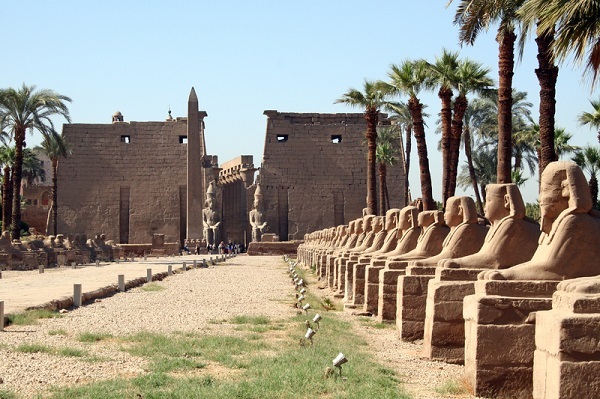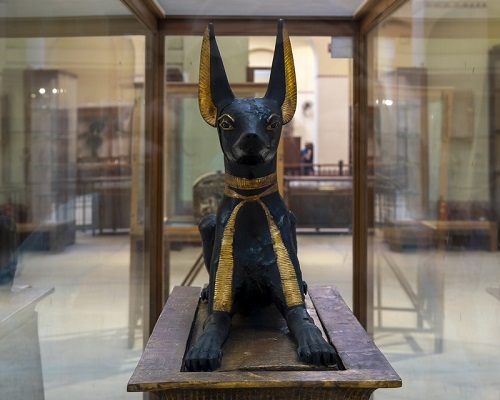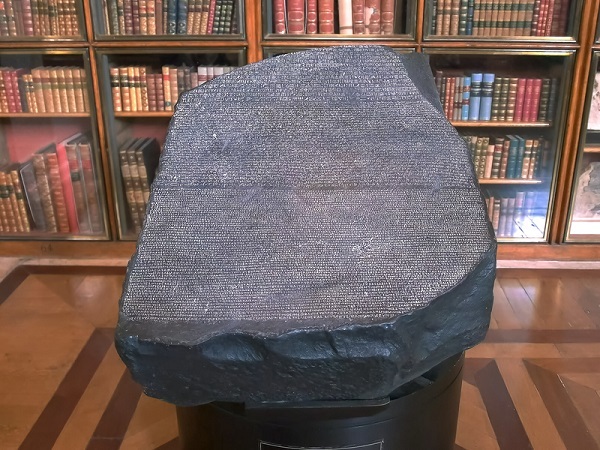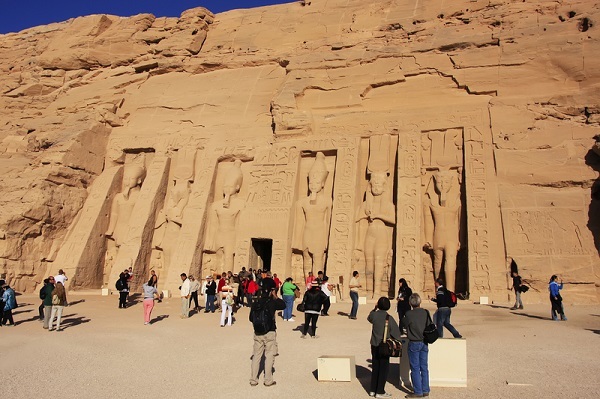

Ancient Egyptian art and architecture were closely tied to the religious beliefs and cosmology of the civilization. The ancient Egyptians are known for their monumental architecture, including the pyramids and temples. They also created intricate hieroglyphs, which served as a form of writing and art.
Egyptian art is characterized by its symbolism, with the use of figures such as the sphinx, the scarab, and the ankh. The pharaohs were considered the living embodiment of the gods on earth and were often depicted in art and inscriptions as gods or in the presence of gods.

The Luxor Temple
The ancient Egyptians are known for their monumental architecture, including the pyramids and the temples. The most famous pyramids are the Great Pyramid of Giza, which is the oldest and largest of the three pyramids in the Giza complex, and the only remaining ancient wonder of the world. The pyramid was built for the pharaoh Khufu and was completed around 2560 BCE.
The ancient Egyptians also built many temples, such as the Temple of Amun at Karnak, the Luxor Temple, and the Temple of Horus at Edfu.
Egyptian art also often depicted religious or royal figures, such as pharaohs and gods. Pharaohs were often depicted in statues, reliefs and paintings, and were also depicted performing religious rituals and making offerings to the gods.
The ancient Egyptians also developed a technique called "sunk relief," where the image is carved into the stone and then the background is cut away.

Anubis god of funerary
The central focus of Egyptian cosmology was the worship of gods and goddesses. The ancient Egyptians believed in a complex pantheon of deities, each with their own specific roles and responsibilities.
The sun god Ra was considered the most powerful god and the king of the gods. He was believed to be the creator of the world and the ruler of all the gods. The ancient Egyptians believed that Ra sailed across the sky during the day and through the underworld at night.
The ancient Egyptians also believed in the concept of ma'at, which represented balance, order, and truth in the universe. They believed that maintaining ma'at was necessary for the continued existence of the world and that it was the responsibility of the pharaohs to ensure that ma'at was upheld.
Many of the gods were associated with specific natural phenomena, such as the Nile, the sun, and the sky. The Nile was considered to be the source of life, and the god Hapi was believed to be the one who controlled the flooding of the Nile.
The gods were often depicted in the form of animals and humans with animal heads, such as Anubis the god of funerary and the sphinx, which was a combination of a human head and a lion's body.
The ancient Egyptians also believed in the afterlife, and they believed that the soul of the deceased had to pass through a series of tests in order to reach the afterlife. They also believed that the deceased needed to be buried with certain artifacts and offerings in order to make their journey to the afterlife successful.

The Rosetta Stone
The pharaohs were considered to be the living embodiment of the gods on earth. They were believed to have divine power and were responsible for maintaining ma'at, or balance and order in the universe.
Pharaohs were also responsible for building temples and monuments dedicated to the gods to gain their favor and secure their power.
Many pharaohs were also depicted as performing religious rituals and making offerings to the gods. They were believed to have the ability to communicate with the gods and to act as mediators between the gods and the people.
The pharaohs were also buried in elaborate tombs with many statues of gods and goddesses to protect them in the afterlife.
The pharaohs were also responsible for the maintenance of the temple complexes, and they appointed high officials to oversee the temple's daily rituals and offerings to the gods.
The ancient Egyptians believed that the pharaohs were chosen by the gods to rule the land, and that their rule was divinely ordained.
In conclusion, ancient Egyptian art and architecture were deeply connected to the religious beliefs and cosmology of the civilization. The monuments, temples, hieroglyphs, and art that the ancient Egyptians created were not just for aesthetic purposes, they also served religious and symbolic meanings.
The pharaohs, being considered the living embodiment of the gods, played a vital role in this connection, as they were responsible for maintaining balance and order in the universe, and were often depicted in art and inscriptions as gods or in the presence of gods. The religious beliefs and practices were reflected in every aspect of ancient Egyptian art and architecture and it continues to fascinate us with its grandeur and complexity even today.

The Tomb of Nefertari
Q1. How were the pyramids built?
Ans. The pyramids were built using a combination of techniques, including quarrying and shaping the stone blocks, transporting them to the construction site, and then assembling them using ramps and pulleys.
Q2. What was the purpose of hieroglyphs?
Ans. Hieroglyphs were used by the ancient Egyptians as a form of writing, and they were used to record historical events, religious texts, and other important information. They were also used as a form of art, and hieroglyphs can be found decorating the walls of temples and tombs.
Q3. What was the role of the pharaohs in ancient Egyptian society?
Ans. The pharaohs were considered the leaders of ancient Egyptian society and were responsible for maintaining order, protecting the people, and ensuring the continued prosperity of the civilization. They were also considered to be the living embodiments of the gods and were responsible for maintaining ma'at, or balance and order, in the universe.